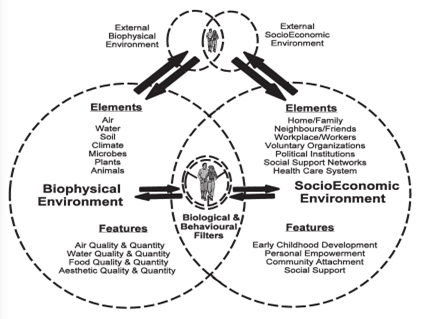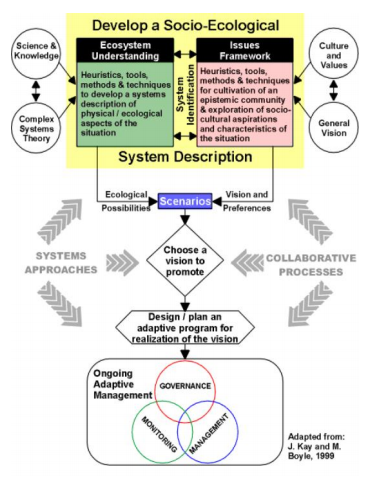Environmental Health Management For Drinking Water Issue
Question
Task:
Your task is to select one EH issue and provide a critical discussion on environmental health management analysing how that issue is typically managed in the urban setting (i.e. Brisbane or Gold Coast) compared/contrasted to the same issue in a regional setting (e.g. Dalby), framing your analysis within a socio-ecological model of health.
Answer
Introduction
The key aim of the report on environmental health management is to reflect on the drinking water issue and the difference between the urban and regional settings to resolve the drinking water. In this context, the survey results are used to provide clear information about the current setting of urban (South Burnett) and rural areas (Cherbourg). While discussing the drinking water issue and its management in both urban and rural settings, the socio-ecological model and butterfly model of health will be implemented to discuss the issue in detail. The report will clearly discuss the similarities and differences of drinking water systems in the selected urban and rural settings. The ways the environmental health (EH) issue can better address it are also discussed.
Socio-ecological analysis of drinking water issue
In the present context, to analyse the socio-ecological environment of the drinking water issues in urban and rural settings, the butterfly model of health is considered. The model consists of a biophysical environment and socio-economic environment affecting the lives of people in an urban and rural setting (VanLeeuwen et al., 1999). Based on the survey results, it can be said that in the regional area (Cherbourg) the more water usage by indigenous people, cultural understanding, and inappropriate water disposal system is the key socio-economic factors that are creating drinking water issues in the rural area. In the rural area, there are several problems faced to manage the drinking water issue, such as cultural barriers, limited facilities for waste management, wild dog issues, less access to resources, and lack of water sterilization.

Figure 1: Butterfly model of health
Source: (VanLeeuwen et al., 1999)
The water quality delivered to the people in the rural area (Cherbourg) and the quality of used water are the biophysical elements of the drinking water issue. Based on the survey results, it can be said that the treatment process of water in Cherbourg is limited, and there are other issues that lead because of cultural beliefs, putting down of horses and children swimming contaminates the drinking water. The survey results also show the current state of drinking water supply and related problems in the South Burnett area. In the South Burnett area, key challenges faced during the management of the problem is record keeping, monitoring.
Pathogenic contamination is a major problem, which is caused due to agriculture runoff. Livestock waste is a major problem for water contamination. The target liters per person in a day are 300 ltrs. for Dalby, but the actual usage is 306 ltrs. It means the actual usage exceeds the target, indicating more need for water supply(Western Downs Regional Council, 2021).
On the other hand, the urban area, which is represented by Brisbane in this context, is facing a shortage of water supply, and the rain bank located in Southbank Parkland, which now supplies 85% of recycled water to parks and gardens, placing less strain on potable water resources. The stormwater runoff generated in Brisbane is capable of fulfilling the entire city's needs, but due to the institutional arrangements and lack of adequate setting. An alternative water source is required for Southbank parkland to fulfill the average need for drinking water to ensure that it can meet all the criteria such as cost, environmental, and public safety. Currently, stormwater harvesting is followed to fulfill the water need of people(Water sensitive cities, 2018). However, the problems related to drinking water supply and its safety in an urban setting are different from the problems in a rural setting. Hence, the socio-ecological factors affect people differently. There are many small urban recycling developments are carried out by the state government, but the key focus should be more on the availability of clean drinking water to the people.
Management of drinking water issue in an urban and rural setting
The Dalby community is only a single community in the Western downs regional council that supplies desalinated water. The desalination treatment process followed in Dalby is going through three phases, and they are pre-treatment, desalination, and reverse osmosis. On the other hand, the Southbank applied a rain bank treatment system. The key similarity between the treatment process of Dalby and Southbank is both are technology-based. The treatment plant of Southbank uses a treatment approach with multiple barrier eight steps. On the other hand, the water treatment process of Dalby consists of three steps. The survey results show that the key things considered by the Cherbourg council to mitigate the issues are education to the indigenous communities about waste disposal, more knowledge about culture and history, and improving the current water system. The key legislations that help in the management of the drinking water systems are the environment protection act 1994, the local health act 2005, and local laws. In South Burnett, the key strategies that are implemented to manage the drinking water problem are diligent water checking, multistage water treat6mnet process, and ways to minimize water contamination. The key legislations implemented to manage the drinking water supply are the water supply act 2008, Australian drinking guidelines 2013, and Food Act 2006. The chemical water treatment, sedimentation process, and filtration process are followed by South Burnett. Hence, it can be said that the infrastructure in rural areas for the treatment process of water and supply clean drinking water has a minimal difference from one place to other.
In contrary, the problems in urban areas are different from the rural area, so the treatment process of water are designed and implemented differently. The treatment process of water consists of more stages compared to the water treatment process in a rural setting(Vargas & Buchanan, 2011). The water treatment process of Southbank is previously mentioned as it consists of 8 stages. In the treatment process of Southbank, the pH level of the water is identified and ensured whether it is on an acceptable stage or not. In the second stage, pre-treatment is provided to the water by removing the pollutants. The water is pumped to the treatment plant to add a coagulant to easily separate fine particles from the water in its clarification process(Water sensitive cities, 2018). After that, Lamella Plate Clarifier is used to remove the solids. Media filtration is used for the water using sand filtration. After that, an activated carbon filter is used to remove volatile organic compounds. UV disinfection is used to disinfect the water from viruses, bacteria, and protozoa. The last treatment process is Chlorination residual to provide secondary disinfection to the water to maintain chlorine-free residual. In the treatment plant, automatic samplers are installed to regularly check the water quality (Water sensitive cities, 2018).
In the rural area (Dalby), the pre-treatment process comprises of Anti-Scalant dosing, Multimedia filtration, and bag and cartridge filtration, which is almost similar to the pre-treatment process followed in an urban setting (Southbank). The desalination process removes the salts using some technologies such as Multiple Stage Flash, Electrodialysis Reversal, and Reverse Osmosis. Along with removing the salts, the technologies are used to remove nutrients (Western Downs Regional Council, 2020). However, Reverse Osmosis is the crucial process used in the Desalination plant of Dalby. The use of the Reverse Osmosis process provides pure water, and the monitoring process is conducted daily; and it consists of monitoring of evaporation rates and visual inspection of pipework.
Ways to minimize the drinking water issue
Along with the improvement in the water treatment process, there are other things that need to be considered in both urban and rural settings to minimize the problem of clean drinking water. The diamond heuristic of the ecosystem approach is adequate to plan the strategies to minimize the EH issue (Waltner-Toews & Kay, 2005). The figure below illustrates the key factors that need to consider while developing strategies and the interrelation with the socio-ecological factors.

Figure 2: Diamond heuristic of the ecosystem approach
Source:(Waltner-Toews & Kay, 2005)
The ecosystem understanding and issues framework indicate the physical and ecological aspects of the situation and their relation with the socio-cultural system. In the present case, the socio-cultural problems in a rural area related to drinking water are mainly based on their cultural habits, such as waste disposal habits, making wild dogs pet, and other things that are affecting the safety of drinking water. The government of the rural areas is facing challenges while managing the safety and awareness of drinking water. The key challenges they face are cultural beliefs and language barriers, which are different from the problems faced in an urban area. The proper integration of governance, management, and monitoring is important to ensure the mitigation of EH issues (Waltner-Toews & Kay, 2005). In the present case, the management-related strategies mean more awareness to the people, sustainable supply of drinking water. The monitoring involves the continuous monitoring of the water treatment process to ensure the safety of drinking water. The governance factor will ensure the implication of legislation to ensure that the supply of drinking water and related factors are managed legally. The process of managing the drinking water issue works differently in rural and urban areas, but the government needs to provide more support to the drinking water system, its supply, and treatment process to ensure the supply of drinking water that can fulfill the regular needs of people.
Conclusion
Based on the survey results and other secondary information, it can be said that the drinking water issue is one of the major environmental issues as it is related to the regular needs of people. The limited supply of clean drinking water is an increasing issue, so the government of both urban and rural areas needs to strengthen their infrastructure to minimize the scarcity of drinking water. Compared to the setting of drinking water supply in Dalby, the infrastructure of Cherbourg needs more cost related support, strong government policies and an effective planning related to water treatment process. On the other hand, the water treatment process and infrastructure support for water supply of Dalby shows growth for the water supply infrastructure.
References
VanLeeuwen, J. A., Waltner-Toews, D., Abernathy, T., & Smit, B. (1999). Evolving Models of Human Health Toward an Ecosystem Context. Ecosystem Health, 5(3), 204–219. https://doi.org/10.1046/j.1526-0992.1999.09931.x
Vargas, C., & Buchanan, A. (2011). Monitoring Ecotoxicity and Nutrients Load in the Reverse Osmosis Concentrate from Bundamba Advanced Water Treatment Plant, Queensland Australia. Water Practice and Technology, 6(1). https://doi.org/10.2166/wpt.2011.006
Waltner-Toews, D., & Kay, J. (2005). The Evolution of an Ecosystem Approach: the Diamond Schematic and an Adaptive Methodology for Ecosystem Sustainability and Health. Ecology and Society, 10(1). https://doi.org/10.5751/es-01214-100138
Water sensitive cities. (2018). The South Bank Rain Bank: Case Study. https://watersensitivecities.org.au/wp-content/uploads/2018/05/South-Bank-Rain-Bank%E2%80%94Case-Study-180503-V6_WEB.pdf
Western Downs Regional Council. (2020). Water Treatment Processes | Western Downs Regional Council. Www.wdrc.qld.gov.au. https://www.wdrc.qld.gov.au/living-here/engineering-services/utility-services/water/water-treatment-processes/
Western Downs Regional Council. (2021). Water Restrictions | Western Downs Regional Council. Www.wdrc.qld.gov.au. https://www.wdrc.qld.gov.au/living-here/engineering-services/utility-services/water/water-restrictions/












